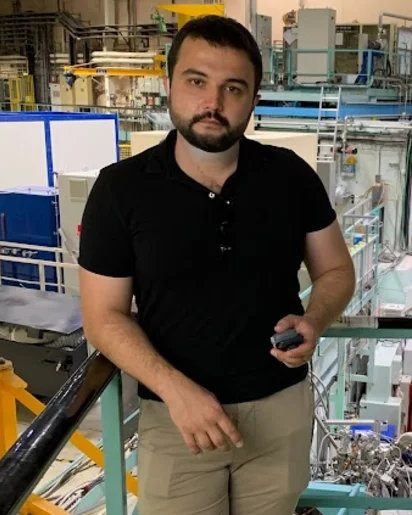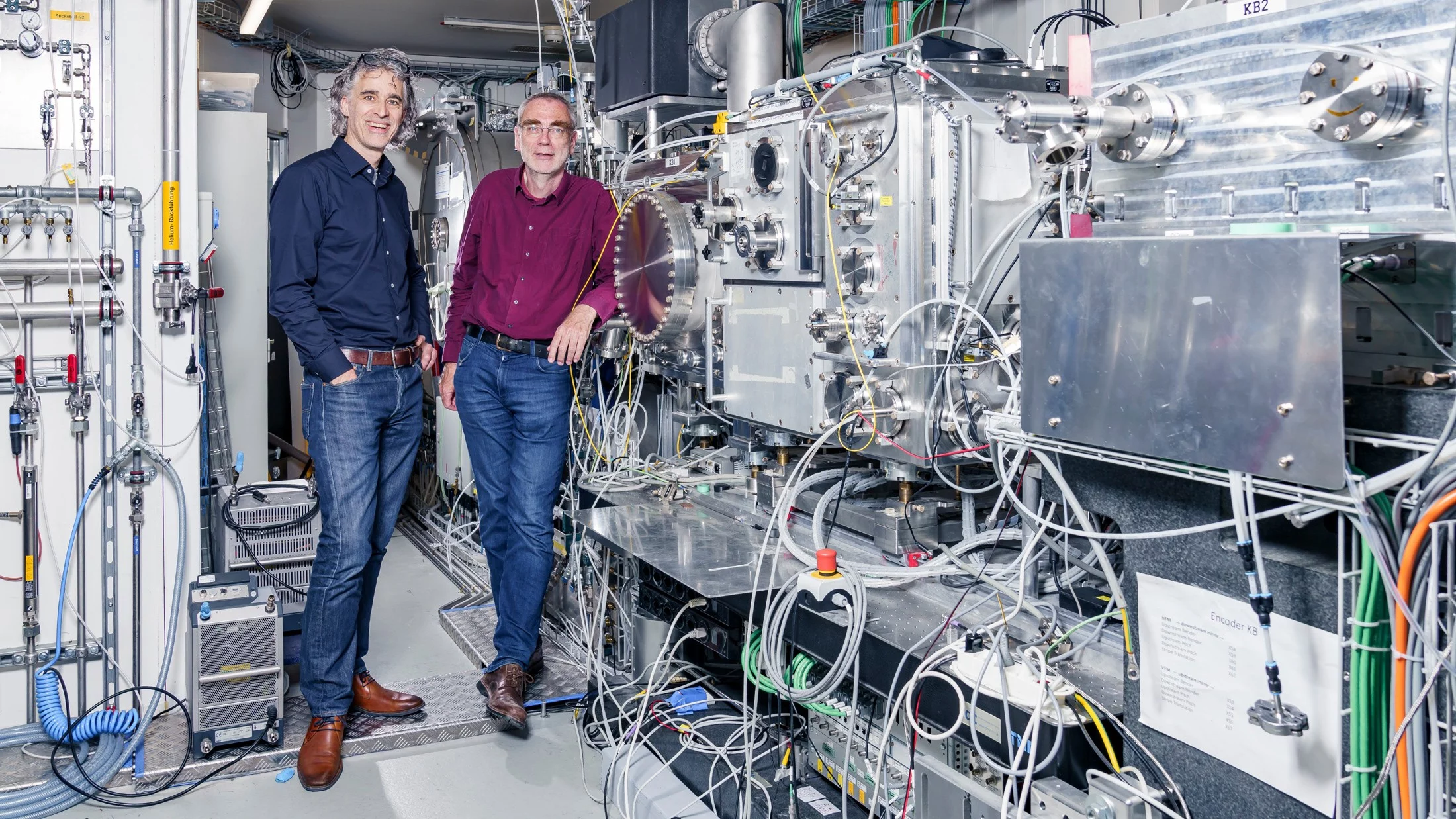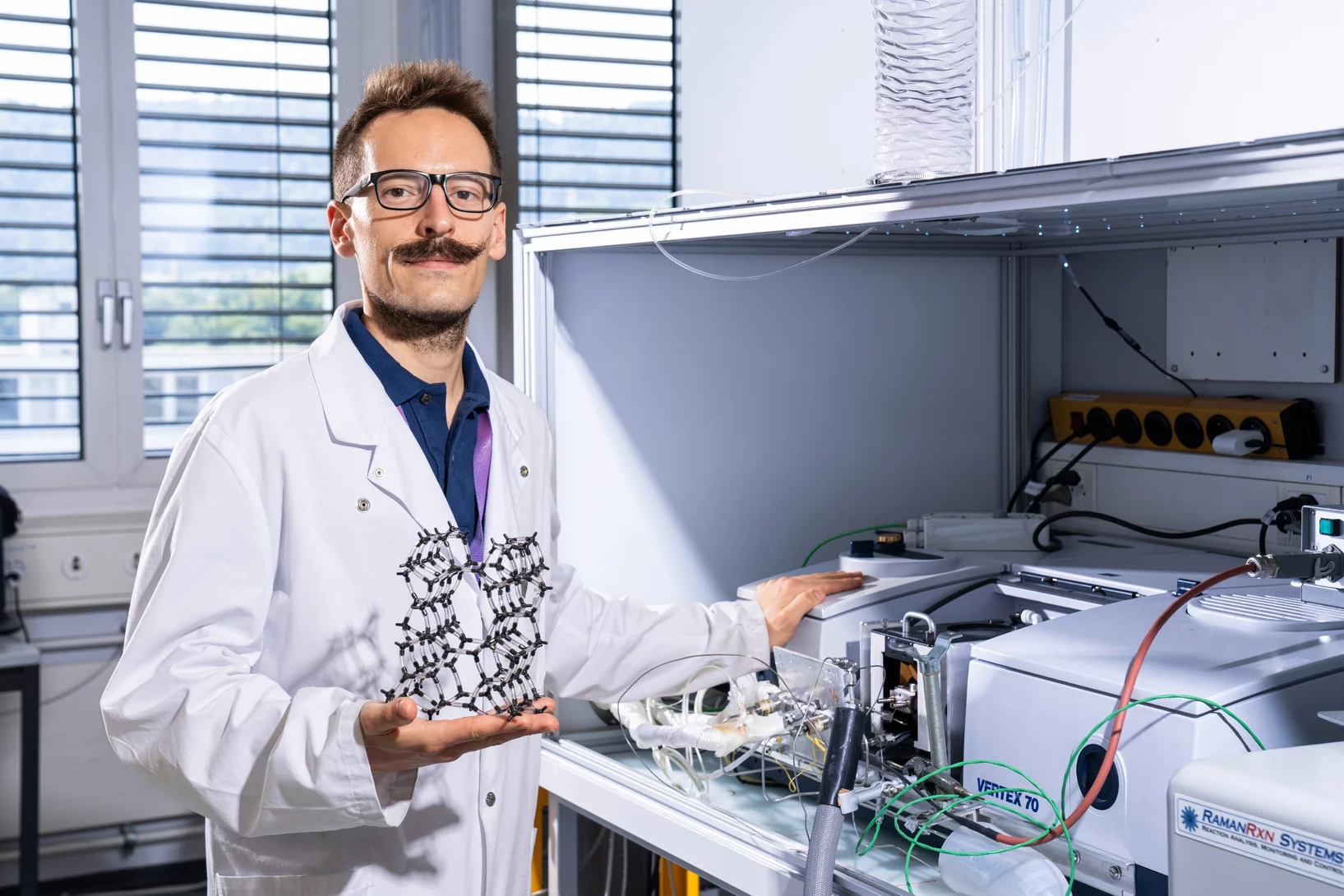Zeolites are highly porous substances that facilitate numerous reactions in the chemical industry. In collaboration with the J. Heyrovský Institute of Physical Chemistry in Prague, PSI researchers have succeeded for the first time in precisely determining the position of the aluminium atoms in the zeolite lattice – an important step on the path to tailor-made catalysts. The study has now been published in the journal Science.
In cat litter they absorb unpleasant odours; in detergents they soften the water, protecting washing machines; and in refineries they help in the production of petrol – zeolites are used in many different places. We encounter them in our daily lives, and they are the most frequently used catalysts for promoting chemical reactions in industry.
Their many useful properties stem from their porous, lattice-like structure. Silicon and aluminium atoms are linked by oxygen atoms to form a crystalline framework with numerous small pores and channels. Zeolites can capture molecules from gases or liquids, hold on to them and help to convert them into other molecules. But it is only now that PSI researchers have managed to draw a more precise picture of a zeolite structure: they have located the position within the lattice of the aluminium atoms that trigger the chemical reactions.
“Zeolites are extremely important materials, but we still don’t fully understand how they work,” says Jeroen van Bokhoven of PSI’s Center for Energy and Environmental Sciences. Previous methods were able to determine the position of the atoms in the lattice but could not distinguish aluminium from silicon. The aluminium atoms play a particularly important role, however: they form the active sites that allow certain reactions to take place. This is why scientists are particularly interested in locating them.
The exact position of the aluminium atoms determines how effective the zeolite in question is as a catalyst and for which chemical reactions. Different zeolite structures are used for different reactions. The PSI researchers used their method to investigate the zeolite ZSM-5, a particularly important industrial catalyst with an unusually complex structure. “We reckoned that if we could do this with ZSM-5, the other zeolites wouldn’t be a problem,” says Jeroen van Bokhoven.

While working as a postdoc in Jeroen van Bokhoven’s team at PSI, first author Przemyslaw Rzepka developed a new method of distinguishing between aluminium and silicon atoms in zeolites. Today, he is a scientist at the J. Heyrovský Institute of Physical Chemistry in Prague. © Przemyslaw Rzepka
The SLS as a large microscope
The question of where exactly the aluminium atoms are located in the zeolite structure has long vexed scientists. “The new method we have developed solves a problem that previously seemed unsolvable,” says Przemyslaw Rzepka, first author of the study. Rzepka, who used to work with Jeroen van Bokhoven at PSI as a postdoc, is now a scientist at the J. Heyrovský Institute of Physical Chemistry in Prague.
Until now, scientists have used ordinary X-rays to look inside zeolites and learn about the structure of their pores and channels. The X-rays are scattered by the atoms and the resulting diffraction pattern allows conclusions to be drawn about the three-dimensional structure of the material. The problem is that the elements silicon and aluminium are right next to each other in the periodic table, and this means that in experiments using ordinary X-rays they look more or less identical. Spectroscopic methods, on the other hand, rely on the way a material absorbs radiation or alters it. Because aluminium and silicon absorb radiation differently, the two types of atoms can be distinguished – however, such methods cannot determine their positions in space, only the number and type of atoms in a material.
The PSI scientists’ solution was to combine the two techniques. They directed soft X-rays, which have comparatively low energies, at the materials at the Swiss Light Source SLS. “The pattern created when the X-rays are scattered by the material tells us the position of the atoms. We then examine these positions using spectroscopic methods to identify the particular type of atom that is sitting there,” explains Przemyslaw Rzepka.
This clever combination was made possible by the unique X-ray diffractometer for soft X-rays at the SLS Phoenix beamline. The researchers were able to see, for the first time, a difference between silicon and aluminium atoms and determine the exact location of the active sites where the reaction takes place.
More than ten years to get the result
The PSI researchers launched the project in 2014 – more than a decade ago. “It took several years of hard work to combine the two techniques and adapt the SLS beamline to the requirements,” explains Przemyslaw Rzepka. “This would not have been possible without the close collaboration with the beamline scientists.”
One of them is Thomas Huthwelker, senior scientist at the SLS and co-author of the study. “The decades of experience we have accumulated here at the SLS, with its solid and wide-ranging research infrastructure, means that we are able to carry out completely new, sometimes risky, but ultimately very rewarding projects,” he says.
Now that it is possible to determine the respective positions of the aluminium atoms in different zeolites, the researchers want to investigate how this affects the performance of the catalyst. Where exactly do the aluminium atoms need to be located in order for a particular reaction to take place? The long-term goal is to tailor catalysts to specific reactions. “To do this, we need a better understanding of zeolites and their structure. We are now on the right track for this,” says Jeroen van Bokhoven. The new method could also be used to analyse materials other than zeolites. “We’re only just getting started,” he says happily. “The next ten years are going to be really exciting.”
Contact
Original publication
-
Rzepka P, Huthwelker T, Dedecek J, Tabor E, Bernauer M, Sklenak S, et al.
Aluminum distribution and active site locations in the structures of zeolite ZSM-5 catalysts
Science. 2025; 388(6745): 423-428. https://doi.org/10.1126/science.ads7290
DORA PSI




